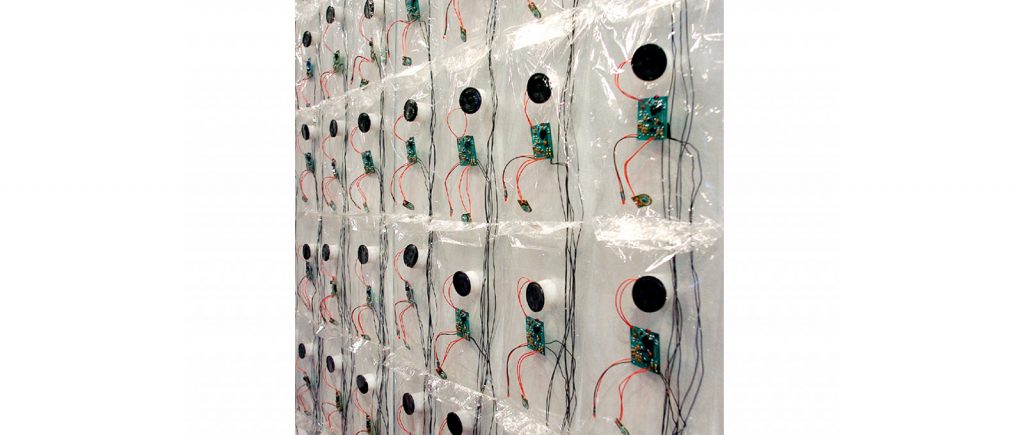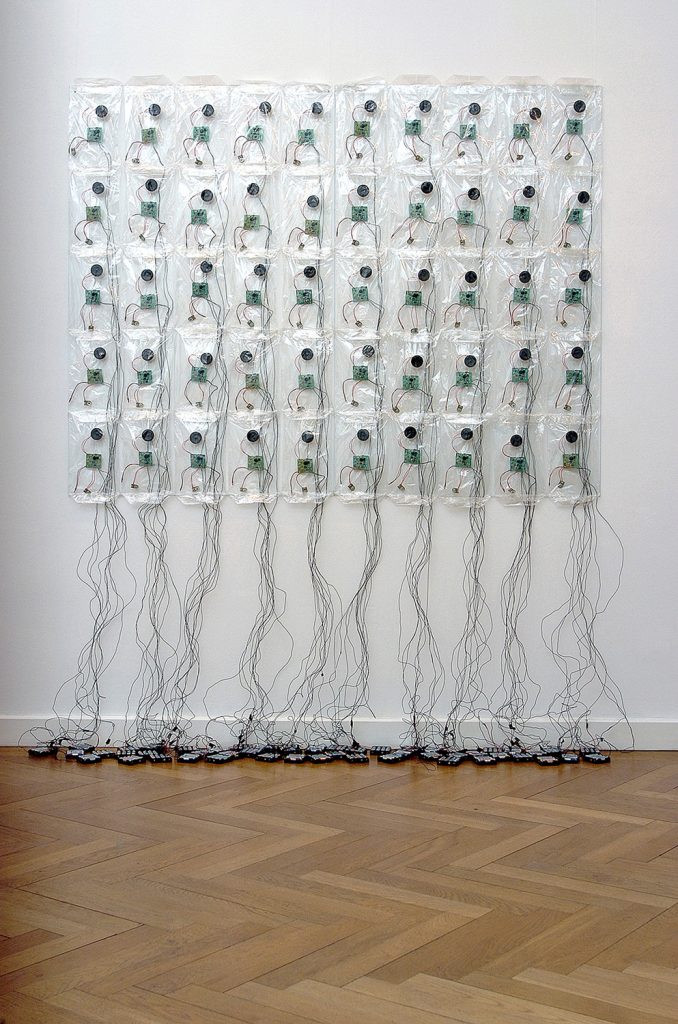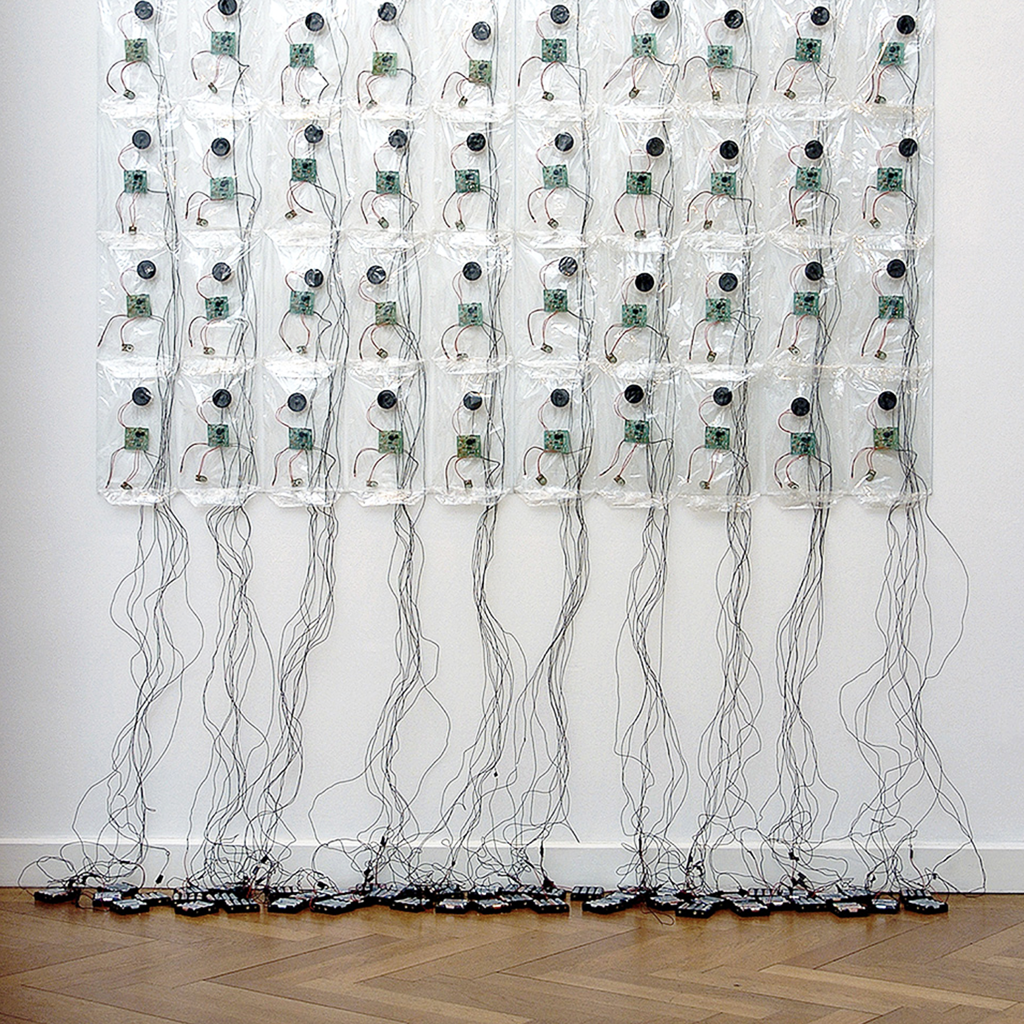Welchen Raum hat Gott heute in unserer Welt und Gesellschaft?
Die Arbeit Gottesraum – eine Ausschreibung der Erzdiözese Freiburg – war im Herbst 2008 in einer Ausstellung im Regierungspräsidium Karlsruhe, im Kloster Hegne am Bodensee und im Morat-Institut für Kunst und Kunstwissenschaften Freiburg zu sehen.
Die Arbeit setzt sich mit der theologischen und interkulturellen Frage auseinander, wie sich der Raum Gottes definiert. Dazu wurden Vertreter und Würdenträger der Weltreligionen, sowie Menschen mit unterschiedlichen Nationalitäten und Glaubensrichtungen, Glaubensverweigerer und Atheisten nach ihrer persönlichen Auffassung und Erfahrung von Gottes Raum befragt.
Die individuellen Antworten wurden als kurze Statements auf Soundmodule übertragen. Der Bertachtende kann die Originalstimmen auf Knopfdruck hören. Er muss dabei auf die Arbeit zugehen und erhält, je mehr Stimmen er abhört, einen umso vielfältigeren Eindruck von Gottes Raum. Die Arbeit wurde von der Akademie in Freiburg angekauft und hängt am offenen Eingang zur Kapelle.
„Durch deine große Liebe Gott, betrete ich dein Haus.“ Rabbiner
DEVINE SPACE
What space does God have in our world and society today?
Hadmut Bittigers display DIVINE SPACE (GOTTESRAUM) was one of the works chosen by the Hadmut Bittigers display Divine Space was one oft the works chosen by the Arch Diocese of Freiburg in a call for submissions in 2008. It has been shown at an exhibition oft he Regional Council in Karlsruhe, at the Kloster Hegne Monastery on Lake Constance and the Morat-Institut for Art and Arts Science Freiburg.
The work deals with the theological and intercultural question of how divine space is defined. For this purpose, representatives and dignitaries of the world religions, as well as people of different nationalities and faiths, deniers and atheists were asked about their personal understanding and experience of divine space.
The individual answers were recorded as short statements on tiny sound modules. The observer can listen to the original voices at the touch of a button, and the more voices he listens to, the more varied his impression of divine space becomes. The work is on display at the entrance to he Chapel oft he Catholic Akademy, Freiburg.


GOTTESRAUM
DIVINE SPACE
Akustische Installation, acoustic installation
2008
Material: Zellophantüten, Soundmodule, Kabel, cellophane bags, soundmodules, cable
Katholische Akademie, Freiburg, Ankauf/acquisition
Fotos: Hadmut Bittiger
Weitere Informationen zu GOTTESRAUM siehe unter › AUSSTELLUNGEN
